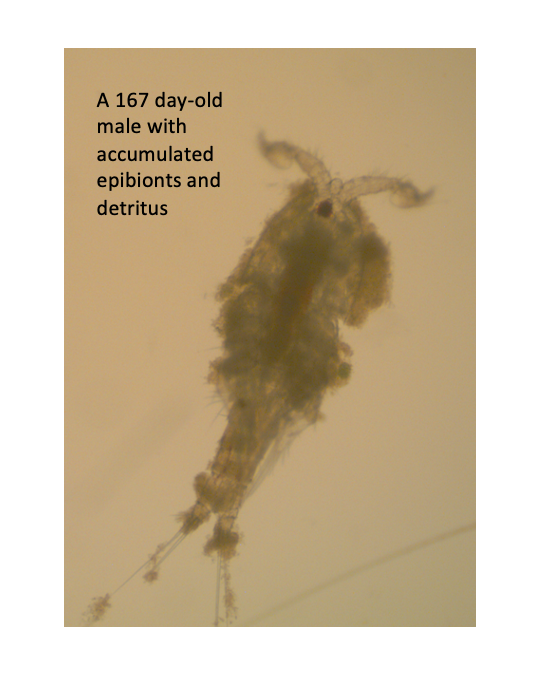Mitochondrial dysfunction has long been associated with age-related decline, and aging phenotypes are often sex-specific. Tigriopus californicus is an ideal model for understanding mitochondrial and mitonuclear effects, because viable hybrids can be created between hugely divergent populations, allowing tests of mitochondrial effects on a strongly mismatched nuclear background. Further, because T. californicus does not have sex chromosomes, sex-specific mitochondrial effects cannot be confounded with the effects of sex chromosomes. While many studies that the more stress tolerant sex lives longer, we find that females are substantially more stress tolerant (Foley et al. 2019, Flanagan et al. 2022) and yet have equivalent or shorter lifespans than males under benign conditions (Foley et al. 2019, Flanagan et al. 2021, Watson et al. 2022). This male lifespan advantage is reduced at high temperature (Foley et al. 2019, Watson et al. 2022) and reversed under food deprivation (Li et al. 2022). Work on reciprocal hybrid crosses revealed that sex differences in lifespan are impacted by mitonuclear interactions (Flanagan et al. 2021). Recent work on these same crosses led by Ning Li revealed a minor transcriptomic response to aging in females and a more complex response in males, with higher mitochondrial gene expression being associated with longer life in both sexes (Li et al., in prep.).
